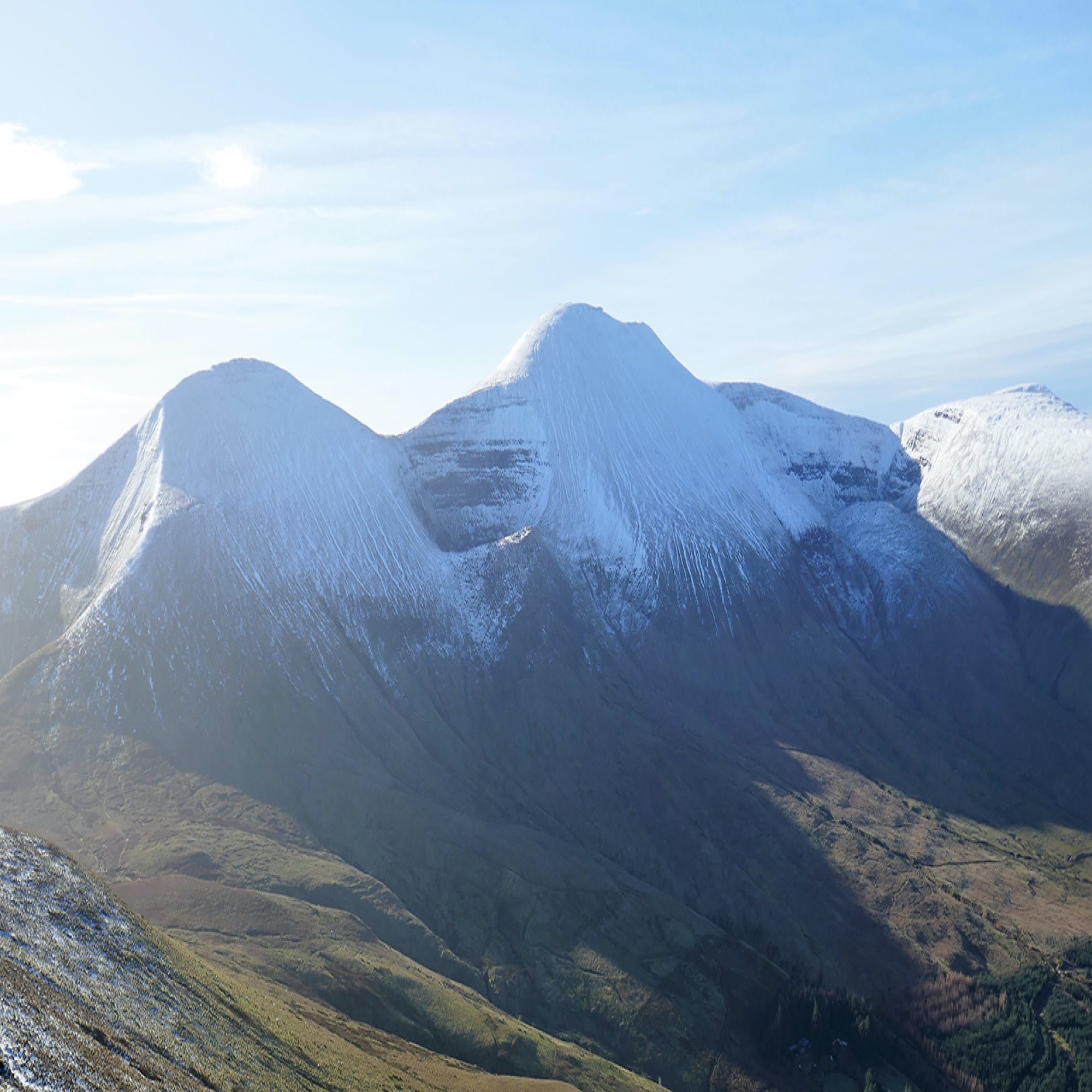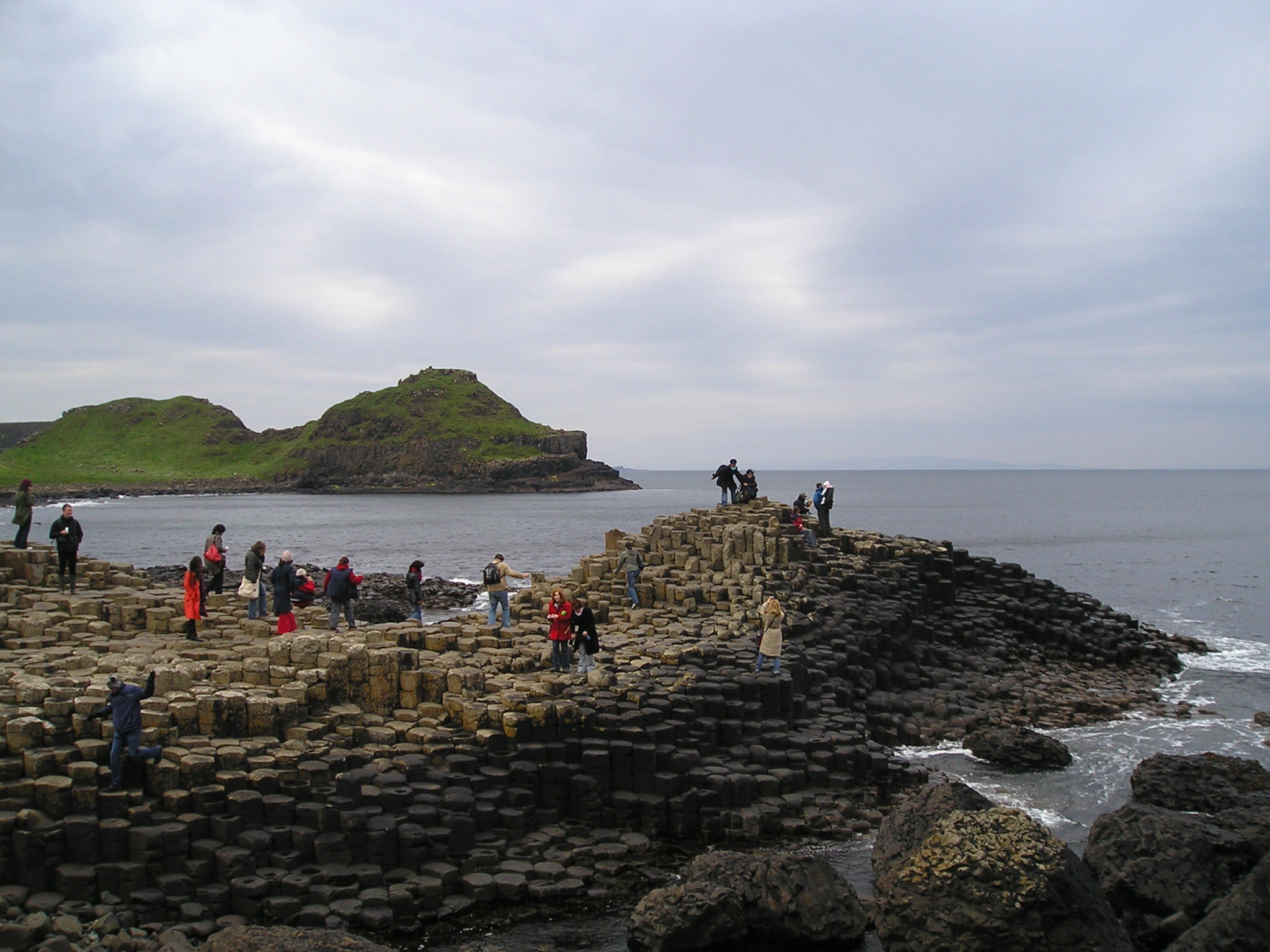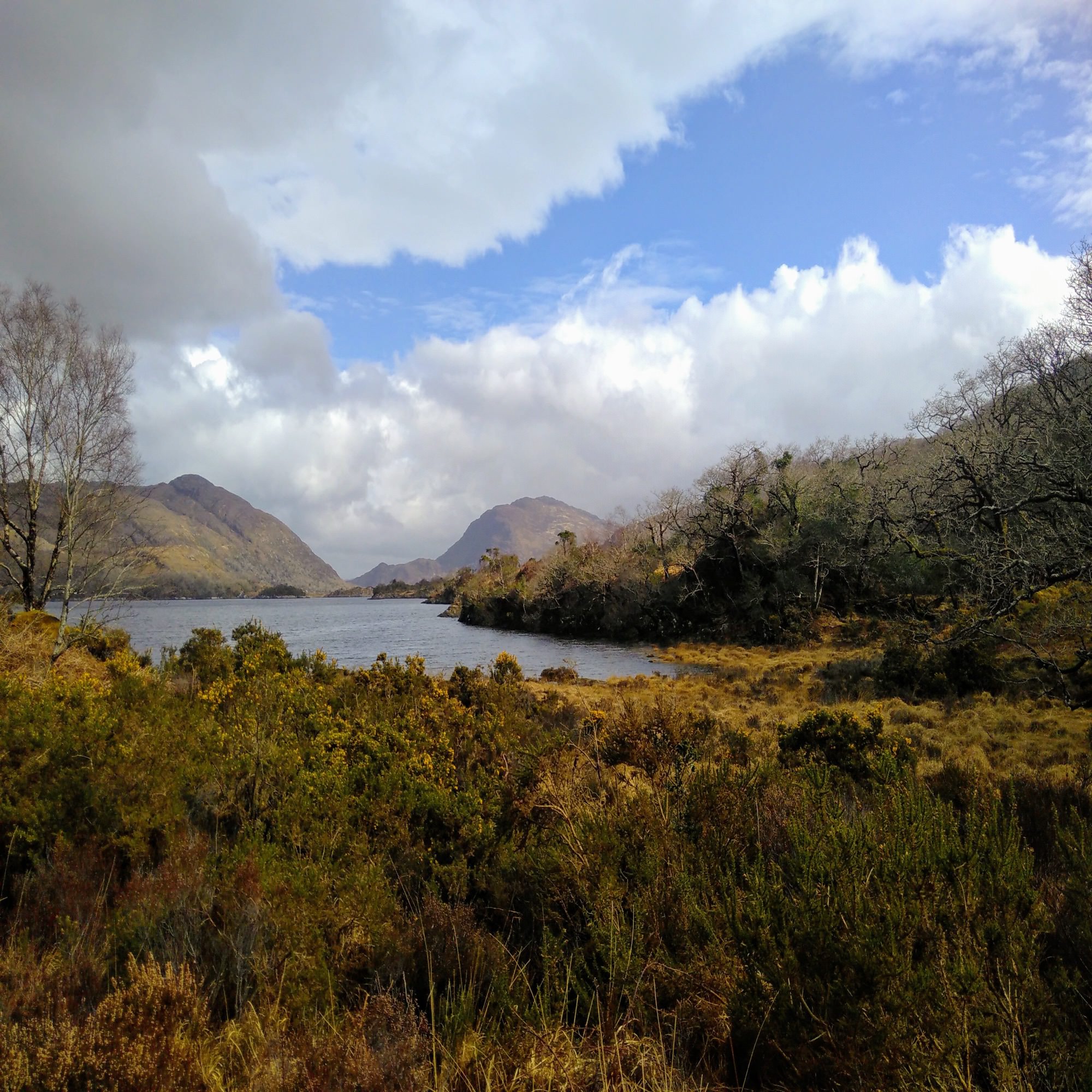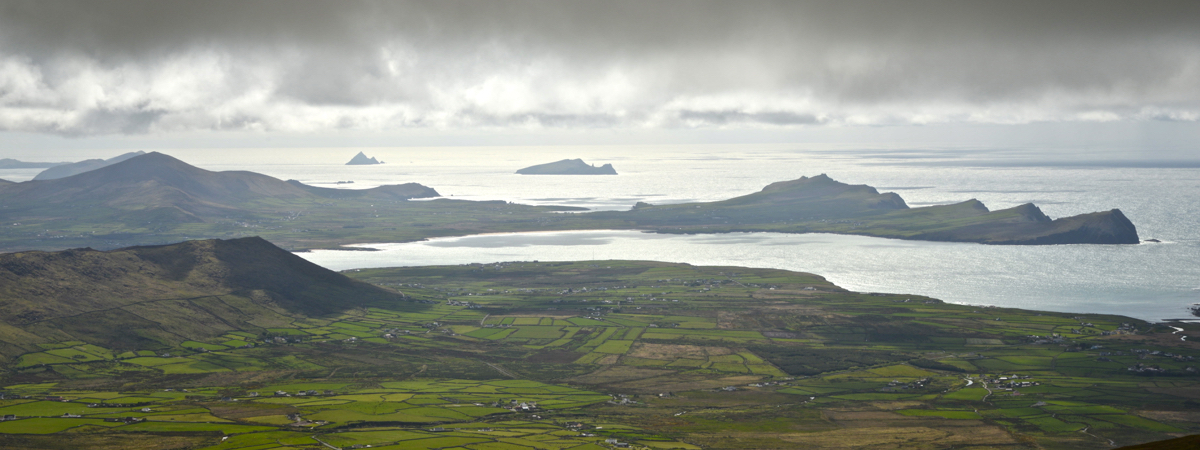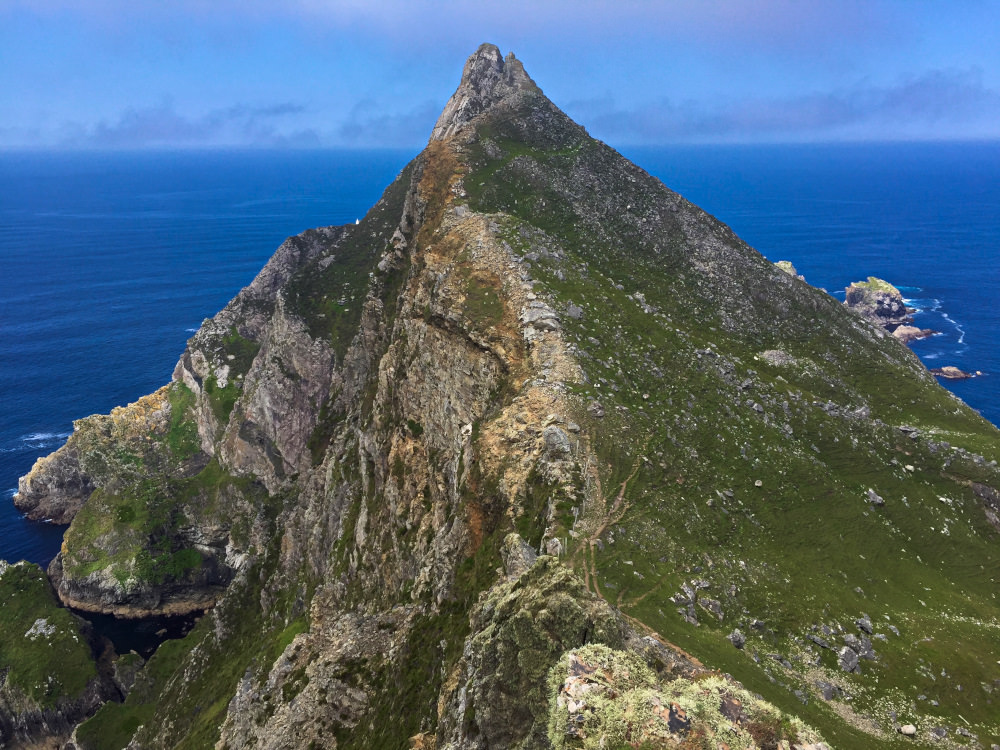The first woman to climb all of Ireland’s mountains
After spending around 20 years climbing all the Munros, Munro tops, Furths, Corbetts, Grahams, Donalds and Nuttalls, a moment of ‘what next?’ led Christine Gordon to spend the next 18 months climbing all the plus-2000ft mountains in Ireland. She is the first recorded woman to complete the challenge.
I’m a collector of mountains. I love getting to the high points of countries I visit and have done so in several countries, including Pico Fogo on Cape Verde and Mount Caterina in Egypt.
After climbing all the Munros and Munro tops in Scotland, my next objective was to climb the Furths, the plus-3000ft mountains in England, Wales and Ireland. I had collected my Munros over a long period of time; I had a different plan for the Furths.
The English Furths are in the Lake District and you can walk them in a multi-day circular walk using the Bob Graham Round as a guide. The Welsh Furths are in Snowdonia and can be completed in a continuous walk over several days. The Irish Furths are different: they are all in the Republic of Ireland but are widely dispersed. Starting in the Wicklow Mountains on Lugnaquilla and ending on Brandon mountain in the Dingle peninsula, I climbed the mountains by cycling between them. It took me 10 days to climb the 13 peaks and was a thoroughly enjoyable way to accomplish my goal.

At the time I completed my plus-3000ft challenge there was a combination of 517 Munros and Munro tops and 34 Furths. I felt a great sense of achievement. But I also felt a sense of sadness. It had taken me more than 10 years, but I was left with a feeling of ‘what next?’
The 222 Corbetts (mountains in Scotland between 2500ft and 3000ft), 224 Grahams (mountains in Scotland between 2000ft and 2500ft), the 89 Donalds in Scotland and the 446 Nuttalls in England and Wales* came to the rescue and I spent another 10 years exploring and ticking off new and varied mountains, and exploring areas of the UK that few people visit.
The challenge begins
As with the plus-3000ft mountains, all good things come to an end and in September 2017 I completed my final Corbett, with two Grahams still to climb. Earlier that year I had completed the English and Welsh Nuttalls and Snaefell in the Isle of Man and was asked at my celebratory party: ‘What’s the next challenge?’ Again, my feeling of elation and sadness combined (or perhaps it was the wine!) for me to respond with: ‘Ireland, of course.’ A statement that suddenly increased my total of mountains still to be achieved from two to 202.
In October 2017 I boarded a plane to Dublin, picked up a hire car and headed to the Wicklow Mountains, armed with a map and Paddy Dillon’s book The Mountains of Ireland (Cicerone Press, now out of print) and the relevant OS maps. The list in Paddy’s book is recognised as a completion criterion by the Long-Distance Walkers Association Register. It was used by 15 of the 19 people who are registered as having completed the Irish mountains, all of whom, I found out, are men. What an exciting discovery.
Not only did I have many more hills to explore, but I would be the first woman to register as having completed Ireland’s plus-2000ft mountains. It was worth going to Ireland for about a week a month for the next 18 months.
Tackling the hills
I used Paddy’s book extensively to identify the summits but discovered that it was less good in terms of route planning. Paddy’s book was published in 1993 and this means that some of the routes described are no longer accurate. For example, although many Irish mountains are rarely climbed and are therefore pathless, there are more hill paths, more summit cairns and better access to some of the hills than described by Paddy. He also used public transport or hitch hiked to get to and from start and end points. This meant that some of his routes were impossible to achieve in a day since the end point was many miles from the start point where I had parked my car.
I had to undertake a good deal of route planning myself. This was made more difficult at times due to Irish OS mapping. Irish maps show contour lines but not the cliffs and other hazards that I was familiar with when planning routes in the UK using British OS maps. I therefore had to sometimes adjust my plan on the ground; there were several times when I had heart-thumping moments by finding myself on terrain where I had to negotiate a way around cliffs, rocks and other hazards.
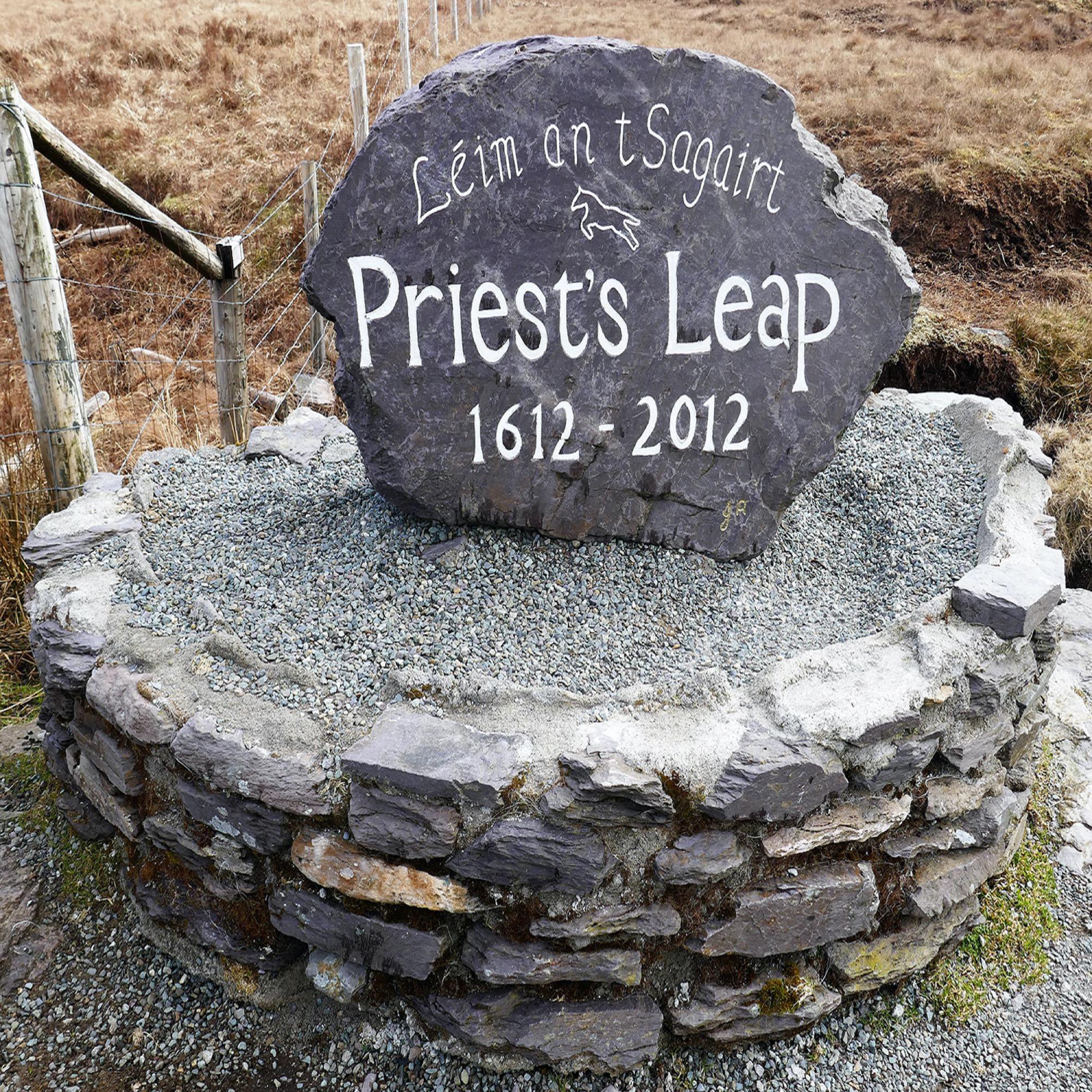
The eastern mountains
The Wicklow Mountains are an interesting mix. There are some mountains like Kippure with a tarmacked road to the top, which means that you could drive to the summit if the gates were open. There are some mountains that are part of the Wicklow Way and are very popular, with well-defined paths, while others are pathless, difficult to navigate and rarely visited. There was one group of mountains (Seahan, Corrig mountain, Seefingan and Seefin) that I achieved by driving up to an army base and, with permission, parking my car in their car park, returning several hours later to be offered a cup of tea and cake by the officers who were on duty. There were mountains that you could climb in an afternoon and mountains that involved long walks and walking back in the dark. There were mountains to be climbed on their own and mountains that you could combine. Irish mountains vary from the easy to the challenging, from having clear paths to being pathless, from being grassy and boggy to being rocky and difficult, from being busy with other walkers to being solitary and isolated.
The diversity of the Wicklow Mountains means that you have great choices of walking opportunities whatever the weather and this allowed me to go walking every day on my first excursion. Not so on other trips. I booked my trips in advance and went for approximately one week at a time.
Ireland is renowned for its rain and mist and there were days when it was impossible to climb or even see that there was a mountain nearby!
Progressing southward, the eastern mountains take in the Blackstairs Mountains, two mountains that I accomplished on one day as opposed to the 10 days I had taken to conquer the Wicklow Mountains.
The southern mountains
The southern mountains comprise the hills around South Tipperary and adjoining counties and, like the eastern mountains, offer a range of walking opportunities. The southern mountains comprise single mountains that can be climbed in an afternoon and some longer, more challenging walks. The mountain ranges include the Comeragh Mountains, the Knockmealdown Mountains and the Galty Mountains. While these three ranges have their own challenges and charms, the Galty mountain range is, in my view, the star of the southern mountains, especially when climbed in snowy and icy conditions.
Irish mountains are made more special by the fact that I did not have to share them with many other people, something that is becoming increasingly rare on Scotland’s Munros. Undertaking the challenge over a period of 18 months also allowed me to experience Ireland’s mountains in every weather condition. It meant I had to hone my navigational skills and not be a fair-weather walker.
The south-west mountains
There are 81 mountains in the south-west of Ireland, the most well-known being Ireland’s highest mountain, Carrauntoohil, in Macgillycuddys Reeks.
I began these hills on Musheramore, a short but memorable climb that I did late one afternoon. There are several Irish mountains that have religious associations and Musheramore is one of these. A cross dominates the summit along with a cairn and a trig pillar.
It was a truly magical experience to sit on the top of Musheramore as the sun was setting and it was difficult for me to tear myself away from my perch to make my way back down the path to my car.
My ascent of the south-west hills continued with several short walks that I combined over a couple of days and this was followed by a walk over four hills: Knockboy, Caoinkeen, Gullaba Hill and Barrerneen.
Many of Ireland’s south-west mountains congregate around Killarney, a lovely Irish town that is famous for its traditional music, which you can hear most nights in several of its bars. I certainly took advantage of this in the evenings.
Killarney gives access to the hills of Killarney National Park, of which Mangerton Mountain is one of my favourite mountains in the area. It has a good path to the summit and is popular, but this does not detract from its charm. It hugs a lough in the Devil’s Punch Bowl and would be a fantastic place for wild camping. This mountain, along with several others, can be accessed from the road leading to Moll’s Gap: a scenic road that takes you high up to a pass between Killarney and Kenmare. The drive up this road is breathtakingly beautiful and the fact that it allows access to several mountain walks is a bonus, taking some of the hard work out of achieving the summits.
As I said above, Carrauntoohil is Ireland’s highest mountain. There are several popular starting points for this hill. It’s an easy walk to the summit, which boasts a large cross, but the walk to Beenkeragh, the adjoining plus-3000ft mountain, is tough and challenging, requiring scrambling and in my case the help of some scouts who were doing the climb at the same time. I had previously climbed these mountains as part of my Furth challenge, but decided to climb them again as they were between two plus-2000ft mountains I needed to tick off.
Although I enjoyed my walk to Carrauntoohil, I preferred my day on Purple, Tomies and Shehy mountains. These hills, along with some of the hills of Macgillycuddys Reeks, can be climbed from the Gap of Dunloe, starting at Kate Kearney’s cottage, which is a famous Irish bar and restaurant. This is a tourist honey pot where cars are discouraged from driving the scenic, narrow road from Kate Kearney’s to the gap. Instead, non-walkers can experience the delights of this area using the horses and jaunting carts that are a popular means of transport.
For me, of course, the hills were the attraction and I was soon able to leave the crowds behind by ascending Purple Mountain and following the ridge along to the other hills on this side of the gap. Not only are the views spectacular, both down to Killarney and to the Reeks but, as lesser hills in terms of height, they are less popular and therefore less busy. I had a truly memorable day on these hills, but admit that, when I descended from them, I would have happily thumbed a lift if one of the jaunting cars had come my way. This did not happen, and I had to walk down the tarmacked road back to my car.
The south-west hills gave me my longest day on the hills, made even longer because I had to climb a hill to which I had previously been denied entry. Ireland does not have a right to roam policy and there were occasions when I arrived at the base of a mountain to be greeted with notices proclaiming that trespassers would be prosecuted.
My worries on this score were not borne out by experience and in all but one occasion I was given permission to climb my proposed mountain by the local farmer, who would often suggest that I parked my car on his or her land.
The famous Irish hospitality was evident both from the farmers I met and from fellow walkers who often wanted to stop and chat. Cutting short a walk to share it with a likeminded person added to my experience, as did the fact that I could then choose a different route the following day to achieve the missed hills. The delights of choosing the less trodden path was something that I became familiar with in Ireland.
My longest day in Ireland was over seven hills. I did these hills in misty and windy conditions, starting with a steep climb on unpathed terrain, which became magical when I looked over my shoulder to see a rainbow framing the lough below.
Walking in mist can present navigational challenges, but it can also offer fantastic opportunities. Changing weather conditions and rising mist can mean that you get glimpses of the surrounding hills that add a surreal experience to your day, as can seeing rainbows and Brocken spectres that are only visible in these conditions. However, you also need to think about what you will miss in the mist. I had an opportunity to climb Knochnadobar on an earlier trip but chose not to do so, not because I was worried about navigational issues but because I did not want to miss the views from the summit over Dingle Bay. I did not regret this decision.
My final visit to the south-west mountains led me to the Dingle peninsula and Brandon mountain and I had a lovely week exploring in glorious sunshine.
Western hills
Western Ireland is stunning. Beautiful beaches and stunning scenery vie for attention. It’s also home to some fantastic mountains, including the Twelve Bens and the Maum Turks. Paddy Dillon suggests that you can do these mountains in two very long days, but this is not possible on day trips where you want to do circular trips and return to your car. I therefore did these hills in multi trips, but this proved to be challenging. Tracks that are evident on ascents are not available on descents and there were several occasions when I found myself wading through bogs and knee-high heather to return to my start point.
The western hills allow you to visit the only Irish mountains to be found on an island and they offer amazing views over the Atlantic Ocean. I had two fantastic days on these mountains, and it was one of the highlights of my Irish challenge.
The western hills also have the most remote plus-2000ft mountain in Ireland, in the Nephin Beg range. I walked the Nephin Beg hills over two challenging days. On the first day I climbed three hills, Corranabinnia South top, Corranabinnia and Glennamong. This involved finding my way along a narrow ridge in wind and returning by the same route. On the second day I started by walking along the Bangor trail before heading off to climb first Nephin Beg and then Slieve Cor before a 14km walk back to my car.
Northern hills
The northern hills include the Mourne Mountains, which I climbed many years ago, and my final Irish plus-2000ft mountain. They have some very popular mountains where you can expect to meet other walkers. This is especially true of Cuilcagh, which has a wide track to a boardwalk almost to the summit. But the Mournes, which are close to Belfast, also invite walkers to their summits. Like the other areas the northern hills offer a range of walking experiences, from short half-day walks to longer, more challenging routes.
My final summit was Slieve Snaght. This mountain is climbed from the Poison Glen and involves fording a river and following the Devlin river to a tributary that leads to a steep and stony ascent to the summit cairn. I climbed this hill in mist, a fitting tribute to the challenge of the Irish mountains. I didn’t meet anyone as I walked in largely unpathed terrain where navigational skills were needed. I had a rough and stony ascent to the top, summitting in mist that lifted on the descent to provide fantastic views.
Conclusions
Completing my Irish hills has allowed me to join the exclusive little band of people to have climbed all of Ireland’s plus-2000ft mountains. I believe I’m the first woman to have climbed these hills; I’m certainly the first woman to have registered this achievement.
I’m not sure why the Munro ‘bug’ has not invaded Ireland. The mountains are varied, interesting and you largely get them to yourself. I have talked about having mixed feelings about completing a hill walking challenge; I feel elated about achieving something that has taken me years to accomplish, but sad that my challenge has reached its conclusion. I have mixed feelings about encouraging people to mirror my Irish challenge. I want to share my experiences in the hope that this will inspire walkers to explore what the Irish hills have to offer; but I also want to make sure that the solitude and peace I found in these hills is preserved for future generations.
You can check out my adventures in Ireland on Youtube.
Some of my Scottish adventures can be found in my Scotland’s hills and mountains playlist.
(*This was the number at the time I started these hills and, although numbers have changed slightly, this is the number I continue to hold in terms of my record.)
